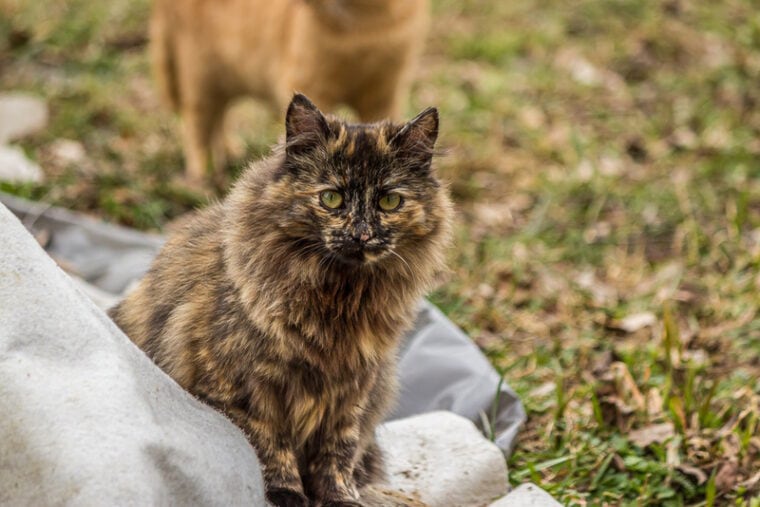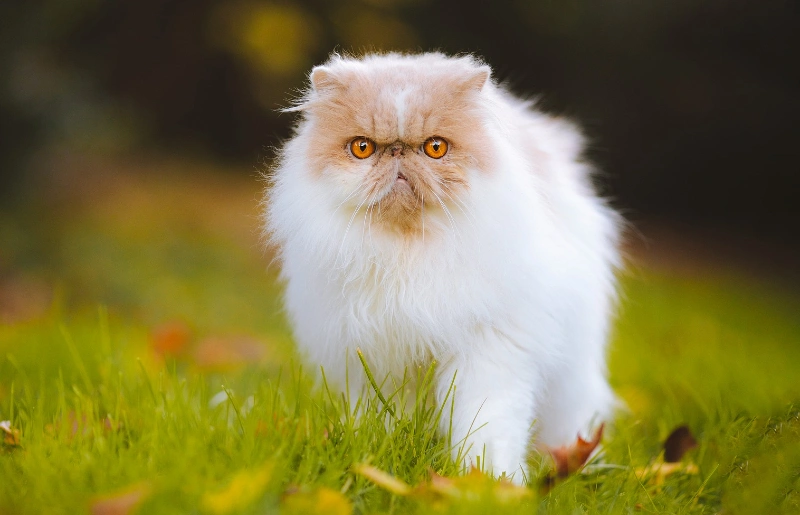
You’ve probably fallen in immediate love if you’ve ever seen a Persian cat. These gorgeous fluffy kitties are known for their affectionate, laid-back natures, tendency to enjoy lounging around, and all-around adaptability. Marylin Monroe had a Persian cat named Mitsou, and one of these regal felines even kept Queen Victoria company.
Although these adorable cats have been around for quite a while, the exact path of their early development remains somewhat shrouded in mystery. However, we know that these relaxed four-footers first appeared in the European documentary record around the 17th century, when two separate travelers brought long-haired cats back to France and Italy.
This article provides a brief rundown on the history of Persian cats, so read on if you’re dying to learn more about these charming, fluffy felines.
What Are Persian Cats Known For?
When it comes to personality traits, Persian cats are known for their relaxed and sunny dispositions. They tend to enjoy long, quiet lounging sessions, and because of their gentle natures, they’re often great with kids, particularly those they’ve grown up with. Some owners describe these felines as having dog-like personalities, and they’re a great choice if your home tends to be empty for several hours a day, as many Persian cats don’t mind spending some time alone.
Physically, these long-haired cats tend to be mid-sized and weigh anywhere from 7 to 10 pounds. They’re not likely to jump on your cabinets or get stuck in the rafters as they’re not usually attracted to high places. All Persian cats have long, fluffy hair that requires daily grooming.
Some Persian cats have long faces, and others have short, flattened features described as peeked. Owners of short-nosed cats need to provide daily facial cleaning to ensure their feline family members stay clean and healthy. And although you might be most familiar with the super-cute white Persian cat, these gorgeous animals come in several colors, including tortoiseshell and black.

Where Do Persian Cats Come From?
No one really knows! To begin with, scientists aren’t sure how or if Persian cats are related to the common ancestor of most domestic cats. African wildcats, the ancestors of most household felines, don’t have a long-haired variant, which makes the Persian cat’s origin difficult to pin down. Interestingly, it appears that these handsome felines have Western European ancestry, although the animal was introduced to Europe through contact with Persia and the Ottoman Empire.
The first references to Persian or long-haired cats in Europe occured in the 17th-century historical record., Pietro Della Valle, an Italian traveler, brought one back from his voyages in Persia, and Nicolas-Claude Fabri de Peiresc, a French astronomer, returned to France with a long-haired cat from Ankara in the Ottoman Empire.
So Why Are They Called Persian Cats?
Animal lovers throughout Europe began calling these sweet, fluffy creatures Persian cats due to the widely accepted notion that the felines were somehow native to Persia. In reality, we don’t know where they’re from, but they appear to have been introduced to Europe by travelers returning from Persia and the Ottoman Empire.

How Did They Become So Popular?
During the 18th century, these felines became increasingly popular in France, Italy, and England as travelers coming back from Persia and the Ottoman Empire began bringing home long-haired cats adopted during their trips. By the 19th century, cat breeding had become a regular upper-class pursuit, particularly in England, and cat lovers began selectively breeding long-haired cats. Ultimately, Persian cats were one of the breeds to participate in the first organized cat show, which took place in England in 1871.
When Did Persian Cats Come to North America?
Historians aren’t quite sure when the first Persian cats arrived on the shores of the North American continent. In The Book of the Cat, Frances Simpson claims to have received two long-haired kittens from a sailmaker somewhere in New England around 1869. A cat named Wendell was adopted directly from Persia by Mrs. Clinton Locke around the same time. Mrs. Locke displayed several Persian cats in 1895 in New York City at what’s commonly acknowledged as the first nationally successful cat show.

Have Persian Cats Always Looked the Same?
Nope! Cat fanciers in the early 20th century often included what would today be identified as Angora cats under the umbrella term Persian. Angora cats tend to be slender and have longer faces and silkier fur than their Persian feline relatives. During the 20th century, breeders mixed the two types of cats to select for specific traits like fur quality. Today, the Cat Fanciers Association of America recognizes Turkish Angoras as a separate breed.
Can Persian Cats Be Mixed With Other Breeds?
Absolutely! One of the most popular breeds in the United States, the Himalayan, is a Persian-Siamese mix. First acknowledged in the 1950s, these adorable felines have the fluffy coat of a Persian cat with the dark pointing and blue eyes of a Siamese cat Cat lovers during the 20th century regularly interbred Persian and Angora cats.
Do Persian Cats Have Any Health Problems?
Persian cats tend to have a heightened risk of certain genetic disorders, including polycystic kidney disease. Most need daily grooming to keep their fur clean and untangled. Cats with peeked features sometimes have trouble breathing, dental issues, and special grooming needs. Taking your Persian to the vet at least twice a year, providing healthy meals, and spending time with the cat every day can help it enjoy a happy, long life.
Featured Image Credit: Dmitrii Kash, Shutterstock






